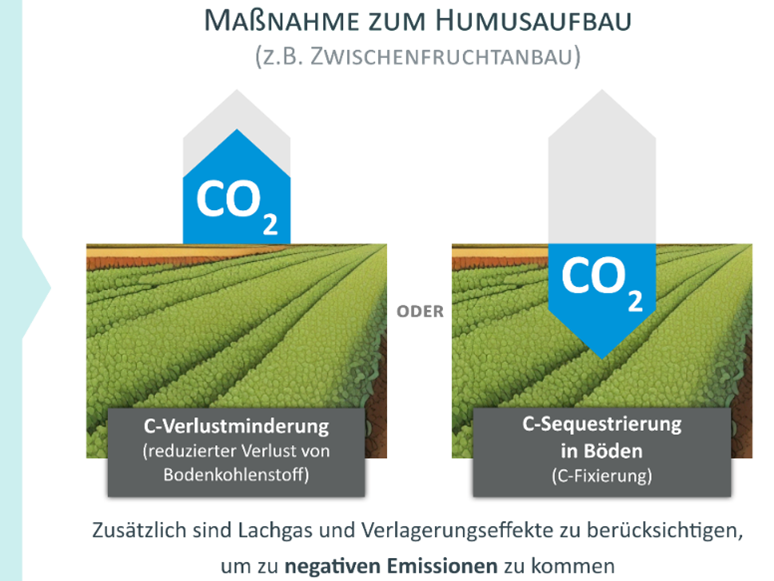A new publication from EJP Soils clarifies the terms C sequestration in soil, climate change mitigation, and negative emissions. An analysis of recent scientific publications found that these terms are largely used incorrectly, which has the potential to inflate expectations regarding the contribution of increased soil carbon to climate change mitigation.
Emissions can be recaptured from the atmosphere and stored in the form of soil organic carbon such that it is no longer harmful to the climate. Increased storage may even lead to so-called negative emissions under the right conditions. At least, that is the goal of enhancing soil carbon for climate change mitigation. When carbon is removed from the atmosphere and stored in the soil as part of soil organic matter and thereby increases global soil carbon stocks, it is called carbon sequestration in the soil. The key condition here is, ‘increases global carbon stocks’: Many agricultural fields in Europe are currently losing soil carbon as a result of climate change or unsustainable management. Measures to increase soil carbon may, therefore, only serve to reduce or stop carbon loss, so called C loss mitigation. Because carbon loss still outpaces carbon accrual in these areas, there is no increase in global soil carbon stocks, and thus there is no carbon sequestration in the soil. Similarly, without meeting this key condition, negative emissions cannot be generated because, although reduced, emissions still outweigh the increase in soil carbon.
This new EJP Soil publication clarifies the definitions and proper use of the terms “C sequestration”, “negative emissions”, “climate change mitigation”, and “soil carbon accrual”, and addresses the potential pitfalls of using these terms incorrectly. In doing so, the aim is to improve communication between the various stakeholders in science, politics, industry and society, thereby amplifying our chances of implementing successful climate change mitigation strategies.

![[Translate to English:] [Translate to English:]](/media/_processed_/6/4/csm_titel_CO2Kampagne8_afeea2273e.png)
![[Translate to English:] [Translate to English:]](/media/_processed_/4/1/csm_titel_93px_CO2Kampagne8_9b0f3354d4.png)






